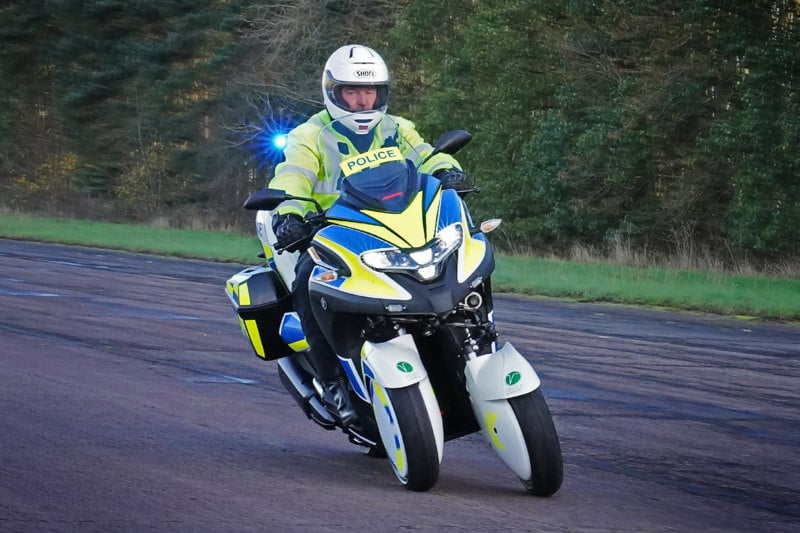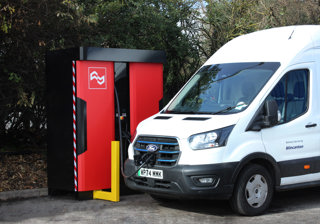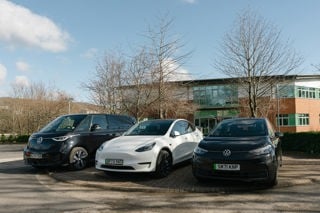This feature was taken from our Electric Fleet: Moving to Net Zero special report.

The pressing need for organisations to decarbonise transport has driven tremendous innovation among UK fleet decision-makers, with many looking outside their traditional operating models to bring about change.
This has seen many adopt alternative solutions to cars and vans, such as e-cargo bikes and drones, to fulfil specific requirements. However, one sector seems to have been largely overlooked – the zero-emission light-powered vehicle (ZELPV).
These are legally described as ‘L category vehicles’ and are two-, three- and four-wheeled passenger or cargo vehicles, and they range from electric mopeds to quadricycles, such as the Citroën Ami and Renault Twizy.
“Tomorrow’s transport mix will inevitably be one hell of a change from how it is now as low- and zero-emission products evolve,” says Alfie Brierly, director of policy and public affairs at the Motorcycle Industry Association (MCIA).
“These vehicles are incredibly compact and efficient. They consume far less energy than a car does, making them a lot cheaper and far better for the environment, especially if you look at the entire lifecycle emissions – including production – which Government needs to be doing.”
Given that ZELPVs are small, they have the potential to use valuable road space more efficiently, reducing congestion (see Page 36) and enable a shift from traditional transport modes for commuting and leisure journeys, as well as potentially replacing vans for last-mile deliveries in urban areas, he adds.
“We know ZELPVs will not be suitable for every single journey,” says Brierly. “But that is not the point of transport choices. Transport choices shouldn’t be binary. It shouldn’t just be between a car or walking, for example. Or between getting in your car and cycling.
“These vehicles are here as an option should you need them to make sure you are choosing the right vehicle for the right journey.”
Fleet adoption
There are a number of factors currently limiting the use of ZELPVs, with a key one being the lack of suitable vehicles available.
Despite this, some fleets have already incorporated them into their operations. For example, as part of the recent launch of its new EV fleet, Cardiff University has taken on three Citroën Ami quadricycles for employees to use as pool vehicles for journeys that may previously have been undertaken in their own cars.
“Our new EV fleet includes a range of vehicle sizes to accommodate our diverse transportation needs,” says Professor Monjur Mourshed, dean of environmental sustainability at the university.
“The lighter, more compact vehicles are ideally suited for navigating our urban campus while contributing to our carbon emissions reduction goals.”
White Motorcycle Concepts last month launched a new fully-electric rapid-charging motorcycle designed specifically to meet the needs of fleets and first responders.
The WMC300+ offers a 100-mile range when measured against the aggressive emergency services drive cycle (125 miles against the standard drive cycle), and can be charged in less than 15 minutes using a standard CCS charger.
“Current electric motorcycles are focused upon retail needs, but fleet customers, and particularly emergency first responders, demand high levels of availability that, due to charge times, existing solutions just can’t deliver,” says Robert White, founder and CEO of White Motorcycle Concepts.
The WMC300+, which uses an 11.9kWh battery, aims to build on the success of the WMC300FR hybrid three-wheeled motorcycle, developed in conjunction with Northamptonshire Police and on trial with a number of emergency services across the UK.
Northamptonshire Police began using eight of the WMC300FR motorcycles in mid-2022 in its neighbourhood policing teams and although they can be ridden by anyone with a normal car licence, it provided 40 hours of training to officers before they could use them.
Safety implications
To operate a ZELPV on public roads, it must be registered and insured, and the individual who will be driving or riding it must have an appropriate licence with the correct entitlements.
Safety gear is required to use most ZELPVs, but the type of equipment needed depends on the mode of transport and where it is being used.
If the vehicle is a motorcycle or moped, the user must wear a helmet that meets British safety standards. The Highway Code states a helmet should also be worn when using a tricycle or quadricycle, although this is not a legal requirement except in Northern Ireland, where quadricycle users must wear one.
The Royal Society for the Prevention of Accidents is calling for the Government to consider the safety implications that could arise from increased ZELPV use to be considered.
“For smaller, two-wheeled ZELPVs, the level of risk faced by the user would be comparable to that of motorcyclists, who consistently have one of the highest casualty rates on Great Britain’s roads,”it says.
“As the use of ZELPVs in the UK increases, we would like to see health and safety at the heart of every stage of their development, from their design and manufacturing to their testing and licensing.
“We would also like to see a Government campaign which helps to increase awareness and provide safety information, as well as guidance and protection for employees who use ZELPVs as part of their job, including who is responsible for safety in different situations.”
Action plan
MCIA is working to raise the profile and potential of ZELPVs with the Government and industry, with its CEO Tony Campbell joining the Council for Net Zero Transport’s Strategic Advisory Group.
“Three years ago the Government recognised for the first time the value that our sector has to wider society in areas such as congestion, emissions and equality. It tasked us with producing an action plan to identify the opportunities that we need to harness, and also what are the barriers that we need to help with that if we are to unleash our full potential,” says Brierly.
“We did that and launched it with the then transport minister Trudy Harrison.”
The document focuses on four strategic pillars: getting the product right, driving demand by incentivising users, improving access to the vehicles through simplifying the existing licensing regime, and increasing integration by incorporating LPVs into infrastructure and communities.
“In short, however, the Government didn’t do enough,” adds Brierly. “We now have a new Government and, fortunately for us, the Secretary of State has already said she’s very keen to move fast and fix things, which is perfect because we already have this oven-ready action plan.”
Decarbonising a fleet is not just about replacing an ICE vehicle with a like-for-like electric replacement – it may open the door to other, more operationally efficient transport modes.
In our new Electric Fleet: Moving to Net Zero special report, we look at the fleets that are already utilising flying drones, rolling robots or powered mobility such as e-cargo bikes and light vehicles, assessing use cases and considerations for organisations looking to pilot these options.
We also look ahead to forthcoming battery electric technology to evaluate its potential impact on fleet operations, with longer ranges and faster charging among the key benefits, as well as the potential of hydrogen, which is undergoing a number of Government-funded trials in the UK.
Other topics we investigate include the ongoing impact of the ZEV Mandate and how fleet managers need to be prepared to take advantage of any potential deals offered by manufacturers, and technology trends – including batteries – which will have an influence on fleet operations.
We also look at what fully-electric cars will hit the UK market over the next 12 to 18 months, some of which will offer a WLTP range of more than 400 miles.

























Login to comment
Comments
No comments have been made yet.